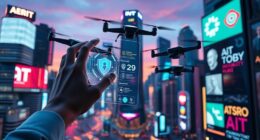In the domain of cybersecurity, Cisco leads the charge with AI integration for advanced threat prevention, boosting security through innovative tools like Hypers Shield. Multi-cloud security complexities are simplified by leveraging AI for swift threat response. Cisco's proactive approach harnesses AI in network protection, offering preemptive security measures and refining defense strategies. By embracing AI in security solutions, Cisco future-proofs cyber defenses, staying ahead of threats. The potent blend of AI and multi-cloud expertise enhances threat detection and incident response. Explore Cisco's dynamic strategies to fortify your cybersecurity in the AI era.
Key Takeaways
- AI integration enhances threat prevention.
- Addressing multi-cloud security challenges with AI.
- Leveraging AI for proactive network protection.
- Future-proofing cyber defenses with AI.
- Adaptive cybersecurity strategies with AI.
AI Integration for Enhanced Threat Prevention
With Cisco's focus on AI integration for enhanced threat prevention in cybersecurity, the company is investing in innovative solutions to bolster security measures. By incorporating AI into products like Hypers Shield, Cisco is able to explore profound network data analysis, allowing for proactive security measures.
This integration enables the identification of potential threats before they escalate, enhancing the overall security posture.
Collaborating with Splunk further enhances Cisco's threat detection capabilities by leveraging AI-driven insights. The goal is to streamline workflows and improve detection, response, and prevention techniques.
Through AI in security solutions, Cisco aims to provide a thorough and robust cybersecurity framework. The Security Cloud Control, for instance, offers a unified policy enforcement mechanism powered by AI, ensuring a holistic approach to security measures.
Multi-Cloud Security Challenges Addressed
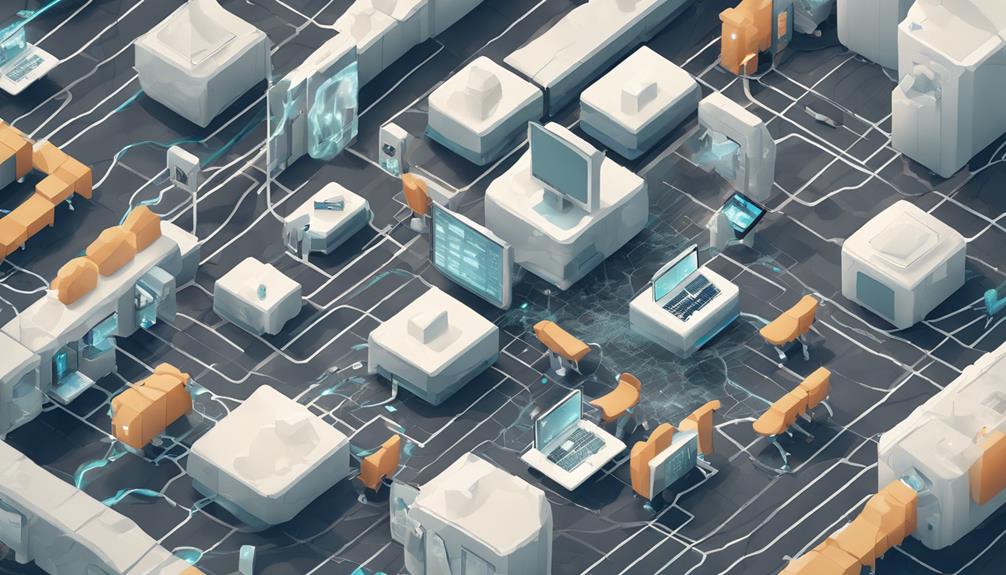
Addressing the complexities of securing data across multiple cloud platforms presents a significant challenge for organizations in the modern digital landscape. To overcome these hurdles, Cisco has developed innovative solutions that cater to the intricacies of multi-cloud security.
Here are key aspects of how Cisco addresses multi-cloud security challenges:
- AI for Security: Cisco leverages AI technology to enhance threat detection and response capabilities in diverse multi-cloud environments.
- Multi-cloud Defense: Cisco's Security Cloud Control simplifies managing security policies across various cloud platforms, ensuring thorough protection.
- Threat Detection: Integration of advanced threat detection mechanisms enables proactive identification and mitigation of potential risks in multi-cloud setups.
- Lateral Movement Prevention: Cisco focuses on preventing lateral movement within data centers in multi-cloud environments to bolster cyber resilience and safeguard critical assets.
Cisco's Innovative Security Workflows
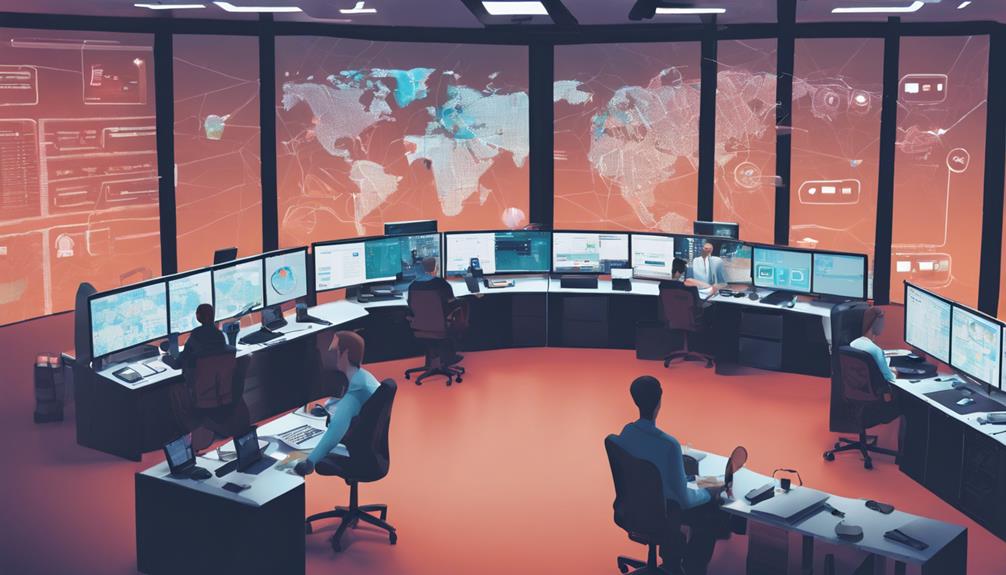
Cisco's innovative security workflows bring together AI technology to enhance threat detection, automate incident responses, and adapt access controls.
By leveraging AI Assistant and Cisco XDR, these workflows provide rapid recommendations for neutralizing threats and improving SOC productivity.
The focus is on streamlining operations, boosting analyst efficiency, and ultimately enhancing overall security effectiveness.
Streamlined Threat Detection
Leveraging cutting-edge AI technology, Cisco's innovative security workflows revolutionize threat detection processes, enhancing efficiency and accuracy in incident response. Through advanced algorithms and automation, Cisco's approach to threat detection offers a proactive defense against security incidents.
Key features include:
- Rapid Incident Response: By correlating data from multiple sources within the Cisco XDR platform, security teams can swiftly identify and respond to potential threats.
- Optimized Mean Time to Detect and Respond: AI-driven recommendations help minimize the Mean Time to Detect (MTTD) and Mean Time to Respond (MTTR) metrics, increasing the effectiveness of incident response efforts.
- AI Assistant Support: Cisco's AI Assistant synthesizes data from various domains to provide actionable insights and precise recommendations to SOC teams, enabling informed decision-making.
- Collaboration and Automation: Seamless collaboration and automation within the security workflows empower organizations to neutralize threats efficiently, safeguarding their enterprise against cyber risks.
Automated Incident Response
With advanced AI technology at the forefront, Cisco has transformed the landscape of incident response through its Automated Incident Response capabilities. By leveraging AI, Cisco's Automated Incident Response synthesizes data across different security domains, providing precise recommendations for action. This automation empowers SOC analysts to respond swiftly and effectively to cyber threats with personalized guidance from the AI Assistant in the Cisco Breach Protection Suite.
One of the key benefits of Cisco's Automated Incident Response is the reduction of alert fatigue among analysts. By streamlining tasks and optimizing Mean Time to Detect (MTTD) and Mean Time to Respond (MTTR), Cisco enables security teams to react promptly to security incidents.
Additionally, the AI Assistant facilitates collaboration among security experts, ensuring a quick and coordinated response to active threats. Cisco's innovative approach to Automated Incident Response not only enhances operational efficiency but also strengthens overall cybersecurity posture in the face of evolving threats.
Adaptive Access Controls
In the domain of cybersecurity evolution, Adaptive Access Controls represent a pioneering approach towards enhancing organizational security through dynamic policy enforcement. These controls, part of Cisco Security solutions, utilize AI technology and machine learning to provide real-time risk assessment and adapt security measures accordingly.
Key features of Adaptive Access Controls include:
- Dynamic Security Policies: Policies that adjust in response to changing threat landscapes.
- AI and Machine Learning Integration: Leveraging advanced technologies to enhance security measures.
- Granular Policy Enforcement: Enabling organizations to set specific policies for individual users and devices.
- Integration with SecureX Platform: Offering centralized visibility and management capabilities for streamlined security operations.
Leveraging AI in Network Protection

Utilizing AI technology in network protection, Cisco enhances its capabilities for detecting and responding to cyber threats proactively. By integrating AI into network security, Cisco can identify potential threats in real-time, enabling swift incident response and mitigation. This critical approach to threat detection is essential in today's dynamic cybersecurity landscape where attacks are becoming more sophisticated and frequent.
Cisco's AI-driven security solutions not only streamline network security operations but also offer predictive insights for preemptive security measures. These AI algorithms play a significant role in enhancing the efficiency and effectiveness of cybersecurity measures, especially in multi-cloud environments where the attack surface is expanded.
The use of AI in network protection by Cisco marks a pivotal advancement in cybersecurity defense strategies, ensuring that organizations can stay ahead of evolving threats and secure their networks effectively.
Future-Proofing Cyber Defenses With AI

Cisco's forward-thinking approach to cybersecurity involves harnessing the power of AI for threat detection and adaptive security strategies. By integrating AI technology into their security solutions, Cisco aims to stay ahead of cyber threats and establish robust defense mechanisms.
This proactive stance not only enhances security effectiveness but also reflects a commitment to innovation in safeguarding against evolving cyber challenges.
Ai-Driven Threat Detection
The integration of AI technology into cybersecurity practices revolutionizes threat detection capabilities, enhancing organizations' defenses against evolving cyber threats. Leveraging AI-driven threat detection, Cisco Security stays at the forefront of the threat landscape, constantly analyzing telemetry data to identify anomalies and patterns that indicate potential security breaches.
Key benefits of AI-powered threat detection include proactive threat response, reduced incident response times, and minimized damages. Additionally, AI algorithms within Cisco's Detection and Response (XDR) solutions enable real-time adaptation to emerging threats and sophisticated attack techniques.
In multi-cloud environments, AI-driven threat detection provides all-encompassing security across various platforms and applications, ensuring thorough protection. By addressing the data problem through advanced AI technologies, organizations can proactively defend against cyber threats, ultimately enhancing their overall security posture in today's rapidly evolving digital landscape.
Adaptive Cybersecurity Strategies
Incorporating AI technology into cybersecurity strategies enables organizations to proactively safeguard their digital assets against emerging cyber threats, ensuring robust defense mechanisms for the future.
By leveraging AI-driven security measures, organizations can enhance their control over data protection in live environments like the multi-cloud and data centers.
Cisco's adaptive cybersecurity strategies focus on empowering organizations to stay ahead of cyber adversaries by utilizing AI for intelligent decision-making processes and rapid threat mitigation. This proactive approach not only enhances threat intelligence but also strengthens incident response capabilities, providing a thorough shield against evolving cyber threats.
The integration of AI technologies in cybersecurity solutions revolutionizes the way organizations protect their digital assets, ensuring a secure and resilient defense posture in the face of modern cyber challenges.
Simplifying Security in Multi-Cloud Environments

Enhancing security protocols in multi-cloud environments is a critical challenge faced by businesses seeking to streamline data protection across various cloud platforms.
To simplify security in multi-cloud environments effectively, businesses can consider the following strategies:
- Implement unified security policies to guarantee consistency and coherence in security measures across all cloud platforms.
- Leverage AI-native approaches to enable automated insights and actions, boosting threat detection capabilities.
- Enhance data visibility by integrating solutions like Cisco Security Cloud Control, which offers improved visibility and threat detection across multi-cloud environments.
- Utilize automated tools and technologies to streamline security management tasks and improve overall efficiency in securing data within multi-cloud setups.
Advancements in Threat Detection Capabilities
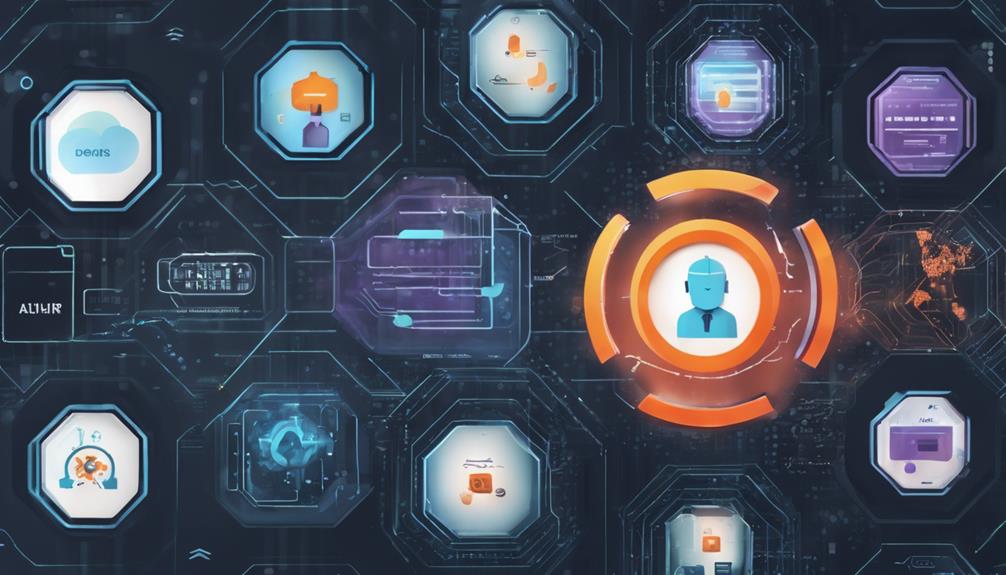
By harnessing AI-powered technologies, Cisco has greatly improved its threat detection capabilities to strengthen cybersecurity across various organizational domains. The integration of Cisco Security Cloud Control and AI Assistant has revolutionized threat detection by leveraging extensive telemetry data from multiple sources. This synergy enables rapid response to active incidents and empowers analysts with actionable insights for more effective threat detection.
Moreover, the incorporation of AI Assistant with Cisco XDR optimizes Mean Time to Detect (MTTD) and Mean Time to Respond (MTTR) by streamlining tasks and offering precise action recommendations. The Breach Protection Suite further enhances threat detection by correlating security events and seamlessly executing recommended actions. This suite tailors recommendations specific to each incident, identifying patterns and potential attacks that may have been missed by human analysts due to alert fatigue.
Cisco's Response Strategies to Cyber Risks

Cisco's proactive approach to cybersecurity encompasses thorough response strategies tailored to mitigate cyber risks efficiently and effectively.
- Utilizing AI for Proactive Insights: Cisco integrates AI technology to gain proactive insights into potential threats, enabling swift and informed responses.
- Network Transformation: Cisco's response strategies include network transformation to adapt to evolving cyber risks and enhance overall security posture.
- Security Cloud Control: Through Security Cloud Control, Cisco offers simplified security policy management across multi-cloud environments, ensuring consistent protection.
- Emphasizing Cyber Resilience: Cisco focuses on rapid response and recovery from cyberattacks, aligning its strategies with the concept of cyber resilience to minimize impact and downtime.
Securing Data in the AI Age
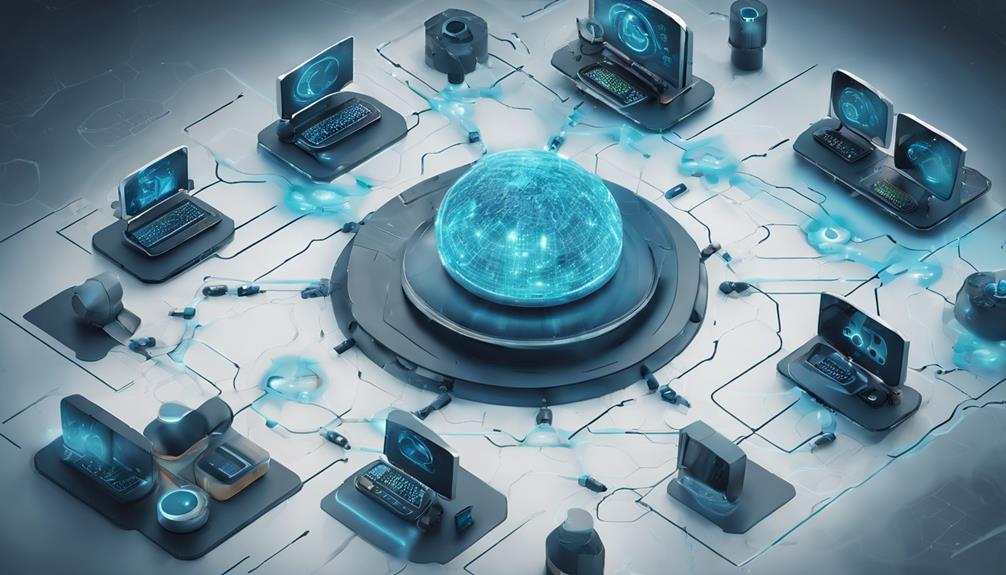
Securing data in the AI age necessitates advanced security measures and strategic implementations to combat evolving cyber threats effectively. Cisco's AI-driven security solutions play a pivotal role in safeguarding data integrity by enhancing threat detection capabilities in multi-cloud environments.
The integration of AI technology empowers Cisco's security platform to provide actionable insights and automate response mechanisms, ensuring proactive defense against emerging risks.
Moreover, Cisco's commitment to cloud-native security solutions reinforces data protection measures and streamlines security policies across diverse environments. By utilizing Security Cloud Control, organizations can efficiently manage security protocols, guaranteeing data security in intricate cloud ecosystems.
Cisco's holistic cybersecurity approach leverages AI to proactively address evolving threats, fortifying data protection in the era of AI and multi-cloud environments. With Cisco's innovative solutions, businesses can stay ahead of cyber risks and secure their data effectively in this rapidly evolving digital landscape.
Frequently Asked Questions
Which Cisco Reimagines Security for Data Centers and Clouds in Era of Ai?
In the era of AI and multi-cloud environments, Cisco is revolutionizing security for data centers and clouds by leveraging innovative technologies to provide advanced threat detection, streamlined security policies, and enhanced performance capabilities.
Does Cisco Use AI Technology?
Like a skilled architect crafting intricate blueprints, Cisco harnesses AI technology within its cybersecurity solutions. Through innovative use of AI, Cisco fortifies its threat detection and response capabilities, embodying a commitment to cutting-edge security practices.
What Is the Future of Cisco?
Cisco's future lies in leveraging AI for enhanced cybersecurity solutions, integrating multi-cloud environments, and advancing threat prevention technologies. With a focus on innovation, collaboration, and proactive strategies, Cisco is poised to lead in the evolving cybersecurity landscape.
What Cisco Product Is Designed to Give Better Security to Cloud Based Applications?
Elevating cloud security to new heights, Cisco Security Cloud Control stands as a beacon of protection for cloud-based applications. With its AI-driven insights and streamlined policy enforcement, this product revolutionizes security management across multi-cloud environments.
Conclusion
In the ever-evolving landscape of cybersecurity, Cisco's integration of AI and multi-cloud solutions is paving the way for enhanced threat prevention and streamlined security workflows.
By leveraging advanced technologies and innovative strategies, Cisco is future-proofing cyber defenses and simplifying security in complex environments.
With the continued advancements in threat detection capabilities and proactive response strategies to cyber risks, Cisco is at the forefront of securing data in the AI age.









